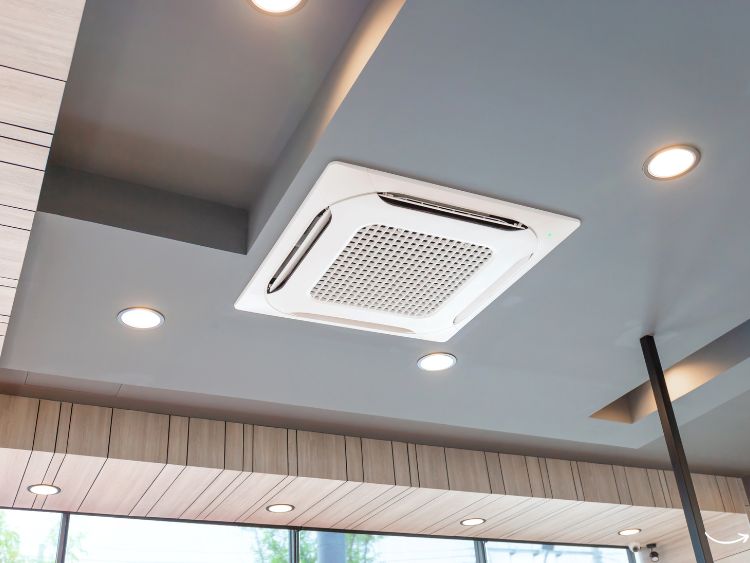Hey there! Have you ever heard of high frequency oscillatory ventilation (HFOV)? It’s a fascinating and advanced respiratory support technique used in critical care settings, especially for patients with severe respiratory distress. If you’re curious about how it works and its benefits, you’re in the right place. Let’s dive deep into the world of HFOV, breaking down its mechanisms, applications, and everything in between.
What is High Frequency Oscillatory Ventilation?
High frequency oscillatory ventilation is a mechanical ventilation technique that delivers very rapid and small tidal volumes, much smaller than traditional mechanical ventilation. Unlike conventional methods, HFOV uses high frequencies (up to 900 breaths per minute) to improve oxygenation and ventilation while minimizing lung injury.
How Does HFOV Work?
In HFOV, a piston or diaphragm oscillates at high speeds, creating pressure waves that move air in and out of the lungs. This technique ensures that the alveoli (the tiny air sacs in the lungs) remain open, enhancing gas exchange and reducing the risk of ventilator-induced lung injury (VILI).
Key Components of HFOV:
- High Frequencies: Ranges from 3 to 15 Hz (180 to 900 breaths per minute).
- Low Tidal Volumes: Smaller than anatomical dead space.
- Constant Mean Airway Pressure (MAP): Keeps alveoli open.
- Active Exhalation: Assists in removing carbon dioxide.
The Science Behind HFOV
The primary goal of HFOV is to maintain adequate gas exchange while minimizing the risk of barotrauma and volutrauma. The high frequencies and low tidal volumes reduce the mechanical stress on the lungs, making HFOV particularly effective for patients with acute respiratory distress syndrome (ARDS) or neonatal respiratory distress syndrome (NRDS).
Benefits of High Frequency Oscillatory Ventilation
HFOV offers several advantages over conventional mechanical ventilation, making it a valuable tool in critical care. Here are some of the key benefits:
1. Improved Oxygenation
HFOV enhances oxygenation by maintaining a constant mean airway pressure, which helps keep the alveoli open. This continuous pressure supports better gas exchange and prevents the collapse of alveoli.
2. Reduced Lung Injury
Traditional mechanical ventilation can cause lung injury due to high tidal volumes and pressures. HFOV uses lower tidal volumes, significantly reducing the risk of ventilator-induced lung injury.
3. Enhanced Carbon Dioxide Removal
The active exhalation phase in HFOV effectively removes carbon dioxide, preventing its accumulation in the bloodstream. This is particularly beneficial for patients with compromised respiratory function.
4. Better Management of Severe Respiratory Conditions
HFOV is highly effective in managing severe respiratory conditions like ARDS and NRDS. Its unique mechanism helps improve patient outcomes by providing superior ventilation and oxygenation support.
Applications of High Frequency Oscillatory Ventilation
HFOV is used in various clinical scenarios, particularly in critical care settings. Here are some of its primary applications:
Neonatal Intensive Care Units (NICUs)
In NICUs, HFOV is a lifesaver for premature infants with respiratory distress syndrome. These tiny patients often have underdeveloped lungs that are highly susceptible to injury from conventional ventilation. HFOV provides gentle yet effective ventilation, improving their chances of recovery.
Acute Respiratory Distress Syndrome (ARDS)
For adults and children with ARDS, HFOV offers an effective alternative when conventional ventilation fails. ARDS patients often suffer from severe lung inflammation and fluid buildup, making traditional ventilation less effective. HFOV helps in maintaining adequate oxygenation and ventilation without exacerbating lung injury.
Postoperative Care
HFOV can be used in postoperative care, especially for patients who have undergone major thoracic or abdominal surgeries. These patients are at risk of developing respiratory complications, and HFOV helps prevent these by ensuring proper lung ventilation and oxygenation.
How is HFOV Administered?
Administering HFOV requires specialized equipment and trained healthcare professionals. Here’s a step-by-step overview of the process:
1. Patient Assessment
The healthcare team assesses the patient’s condition to determine if HFOV is appropriate. This includes evaluating the severity of respiratory distress, underlying conditions, and overall health status.
2. Setting Up the HFOV Machine
The HFOV machine is set up and calibrated according to the patient’s needs. This involves adjusting the frequency, mean airway pressure, and amplitude of oscillations.
3. Initiating HFOV
Once the machine is ready, HFOV is initiated, and the patient is closely monitored. Vital signs, blood gases, and lung mechanics are continuously assessed to ensure optimal ventilation and oxygenation.
4. Ongoing Monitoring and Adjustments
Throughout the treatment, healthcare professionals make necessary adjustments to the HFOV settings based on the patient’s response. This ensures that the patient receives the best possible care and minimizes potential complications.
Potential Complications of HFOV
While HFOV offers many benefits, it’s important to be aware of potential complications. These may include:
1. Hemodynamic Instability
HFOV can affect blood pressure and cardiac output, leading to hemodynamic instability. Close monitoring and prompt intervention are essential to manage this risk.
2. Air Leak Syndromes
Although HFOV reduces the risk of lung injury, air leak syndromes such as pneumothorax can still occur. Regular chest X-rays and clinical assessments help detect and address these issues early.
3. Equipment Malfunction
Like any medical equipment, HFOV machines can malfunction. Regular maintenance and immediate troubleshooting are crucial to ensure continuous and effective ventilation.
FAQs
What is the difference between HFOV and conventional mechanical ventilation?
HFOV uses very high frequencies and low tidal volumes, whereas conventional mechanical ventilation typically uses lower frequencies and higher tidal volumes. This difference helps reduce lung injury and improve oxygenation in HFOV.
Who can benefit from HFOV?
Patients with severe respiratory distress, particularly those with ARDS, NRDS, or postoperative respiratory complications, can benefit from HFOV. It’s especially useful when conventional ventilation methods are ineffective.
Is HFOV safe for infants?
Yes, HFOV is safe and effective for infants, especially those in neonatal intensive care units with respiratory distress syndrome. It provides gentle ventilation, reducing the risk of lung injury in these vulnerable patients.
How long can a patient be on HFOV?
The duration of HFOV therapy varies depending on the patient’s condition and response to treatment. Continuous monitoring and adjustments ensure that HFOV is provided for as long as needed to achieve optimal outcomes.
Conclusion
High frequency oscillatory ventilation is a groundbreaking technique that offers numerous benefits for patients with severe respiratory distress. By using high frequencies and low tidal volumes, HFOV enhances oxygenation, reduces lung injury, and effectively manages conditions like ARDS and NRDS. While it requires specialized equipment and training, the positive outcomes it provides make it an invaluable tool in critical care.



